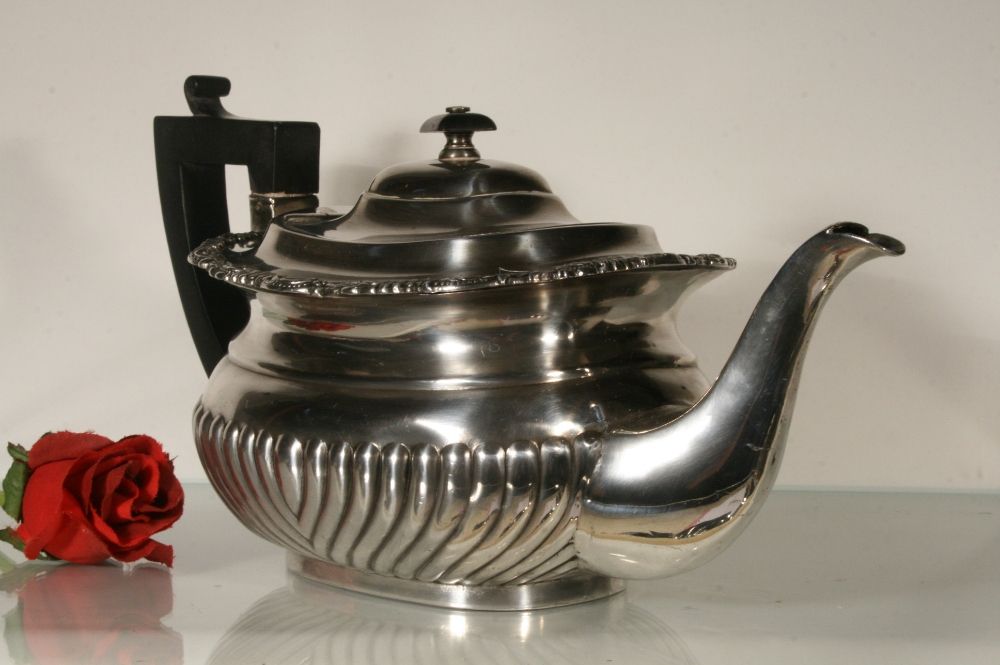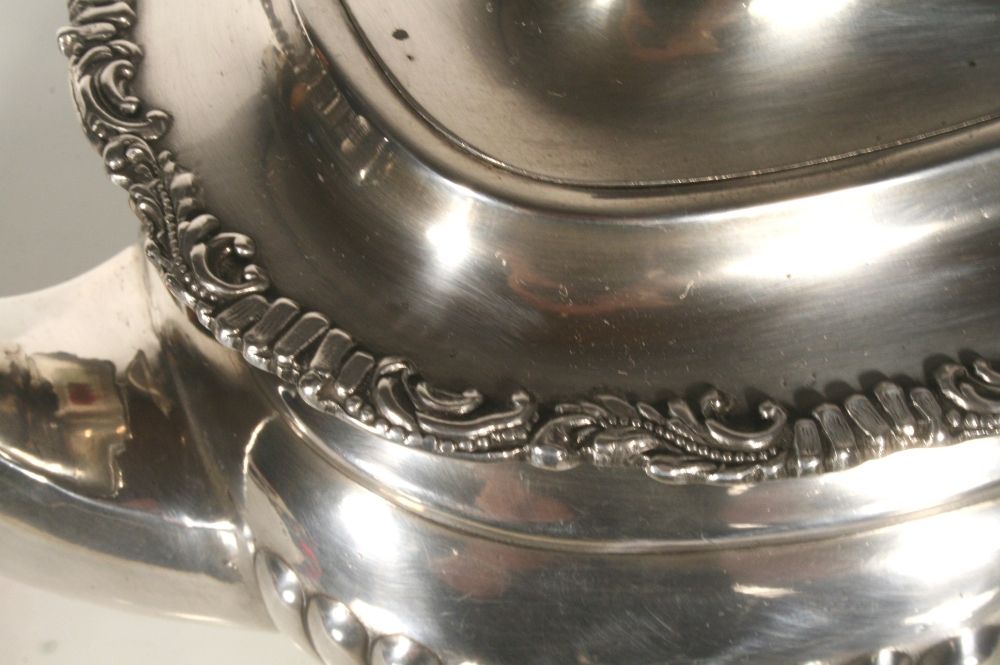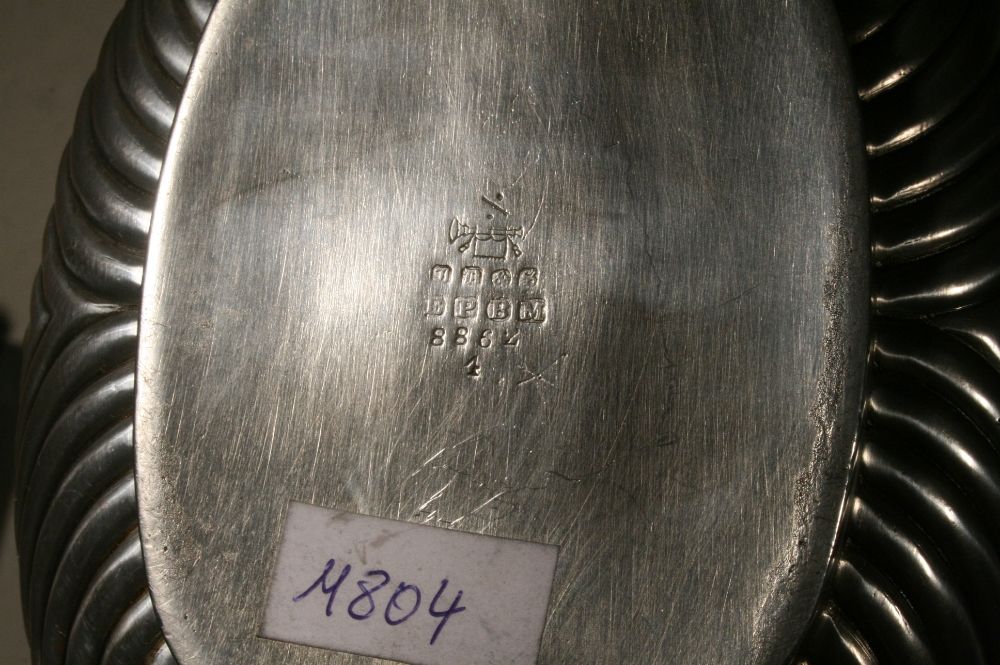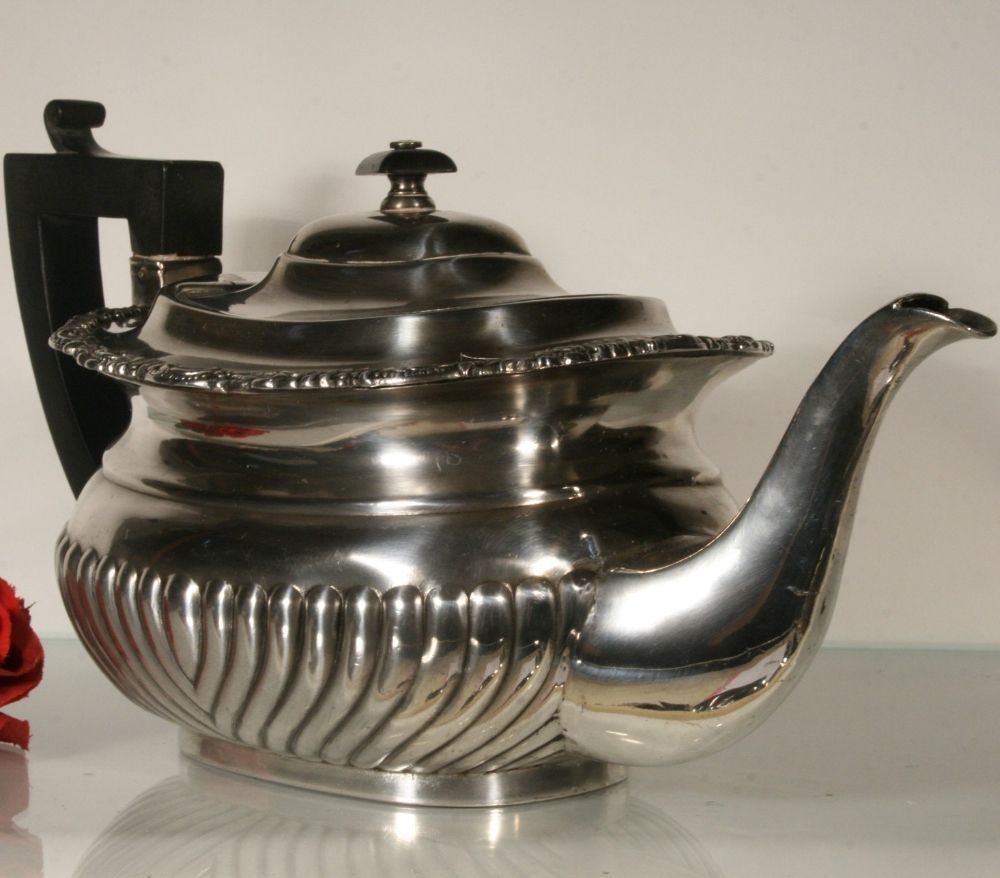TEEKANNE - Silberkanne ELECTROPLATE BRITANNIA PEWTER METAL
stilvolle Kanne aus ENGLAND - art nouveau vom Feinsten
JAMES DIXON & SONS
Sheffield
1879 - 1927
gerillte Wandung mit aufwendigen Relief - florale Verzierungen im Relief - Henkel aus Bakelit - Füllmenge 1,2 Liter
Maße ca.: Breite: 13,5 cm - Höhe: 15 cm - Länge: 29 cm - 0,95 KG !!!
Keine Chips - Ausbrüche - Reparaturen, schöne Alterspatina mit Abrieb am Schanier - bei Bedarf Polierung bzw. Auffrischung des Metalls empfohlen. Boden- Punze vorhanden. Die Marke Trompete und Banner wurde in 1879 registriert - Keine Beulen, Dellen, Ausbrüche etc.
Alle meine Artikel sind gebraucht und von daher optisch nicht ladenneu ! Gebrauchs- und Altersspuren selbstverständlich. Schäden werden natürlich, falls vorhanden, seperat aufgeführt !
Mehr interessante Artikel im SHOP, bitte einfach durchzappen - VERSANDRABATT !!!
!!! COMBINED SHIPPING IS WELCOME !!!
Besuchen Sie meinen eBay Shop: antikguppyShopping Live
Selbstabholung ist natürlich auch möglich bzw. bei den großen schweren "Schätzchen" wie Möbeln auch günstiger! Wir wohnen in 37627.
Vorbesichtigung - Terminabsprache: 0171- 2340155
WICHTIG: Da meine angebotenen Artikel nach § 25a UStG der Differenzbesteuerung unterliegen, ist es nicht möglich, die gesetzliche Umsatzsteuer für den Artikelpreis gesondert auszuweisen







tea pot - electoplate silver - used condition - NO DAMAGES - need a polished proberly inside !
JAMES DIXON & SONS
The first corporate mark of the trumpet (bugle) and banner was granted in 1879, and the second with the name was added in 1890. Some authors claims that the trumpet with banner trade mark was officially registered in 1881 though being in use prior to that.
The "Trumpet and Banner" identifies without doubt Dixon's production. It is a fundamental element to prevent mistakes with the marks "JD & S" used by another Sheffield manufacturer, James Deakin & Sons
HISTORY
The business of manufacturing silversmiths, platers and Britannia metal workers was commenced in c. 1806 by James Dixon in conjunction with Thomas Smith in Silver Street, Sheffield.
In 1824 they moved to Cornish Place, a large site, which enabled them to expand and develop the workshops, casting shops, offices and warehouses.
In 1823 Thomas Smith withdrew and William Frederick Dixon, the eldest son of James, joined the firm. In 1830, the firm began making silver and plated goods at Cornish Place by acquiring the firm Nicholson, Ashforth and Cutts.
When James Willis Dixon, the second son of James, joined the firm the name was changed to James Dixon & Sons. In 1836, the firm began to make spoons and forks from nickel silver - an alloy of nickel, copper and zinc starting from 1848 to produce electroplate.
In the 1850s, several new buildings were constructed in Cornish Place to accommodate a stamp shop, showrooms, plating shops for the electro-plate processes and more warehouse space.
The firm exhibited at the Great Exhibition in 1851, being awarded several prizes in different classes for silver and Britannia metal.
Dixon's costing book of 1879 includes designs by Christopher Dresser, registered from 1880, and these were produced until at least 1885, according to the trade catalogue issued in that year.
In the 1920s the firm began to use stainless steel to make both flatware and hollowware and the production of silver and silver plated goods declined. Stainless steel spoons and forks manufactured by James Dixon & Son carried the name "staybrite" and "Firth", as Firth Brown was the firm where "straybrite" steel was invented in the 1910s.
In 1920 the firm was converted into a limited liability company and in 1930 the firm of William Hutton & Sons Ltd of Sheffield was absorbed into James Dixon & Sons Ltd.
In the 1980s the firm had a financial collapse and the production in Cornish Place closed in 1992.
CHRONOLOGY:
Dixon & Smith c. 1806-1823
James Dixon & Son c. 1823-1835
James Dixon & Sons 1835-1920
James Dixon & Sons Ltd 1920
absorbed William Hutton & Sons Ltd 1930
M804
